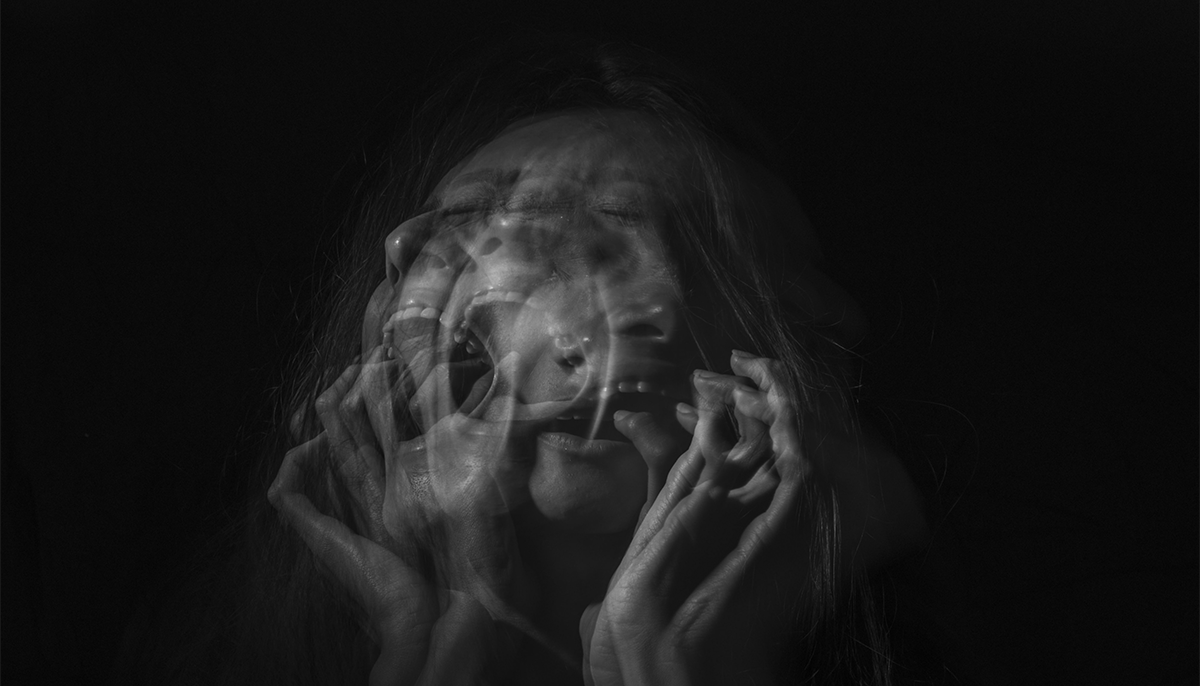In Zen we say, “Life and Death is the great matter.” This is a kind of exhortation to take spiritual practice seriously, but as my teacher used to say, “Don’t be too serious.” There is a little ego in being too serious. Anyway, life and death are two sides of the same coin. They arise together. This is the Buddhist view. And so the fear of dying is also fear of living. Fear arises toward both.
So what is this fear? What are we afraid of?
Fear is a protective reaction of the ego. Ego wants to hold, to have, not to let go. In the sutras this is sometimes referred to as the “tight fist.” Ego is afraid that unless it holds onto what it has, it won’t get what it needs. “At least I have this!” it thinks. “Better to hold on to what I have than take my chances by letting go.”
The ego fears death, but this fear also bleeds into life.
So one of the things ego really likes holding onto is life — being, existing, breathing. It’s like the line from the movie Chinatown (spoken by Jack Nicholson, who has just had his nose injured by a bad guy) — “I like my nose. I like breathing through it.” This is ok as far as it goes—we need to take reasonable precautions — but a life that subsists inside a clenched fist is a rather constricted life. The ego fears death, but this fear also bleeds into life.
A life fully lived — a fearless life — is the life not of the clenched fist, but the open hand. When you see a Buddha statue with an outstretched open hand, this represents fearlessness and generosity. A Zen koan says, “If you have a staff, I’ll give you a staff. If you don’t have a staff, I’ll take it away.” Staff of life and death, stuff of life and death.
A nurse’s assistant, a man who also held a black belt in judo, once said to me as I lay in bed, recovering from a deathly illness, “No fear. No fear.”
1. Death
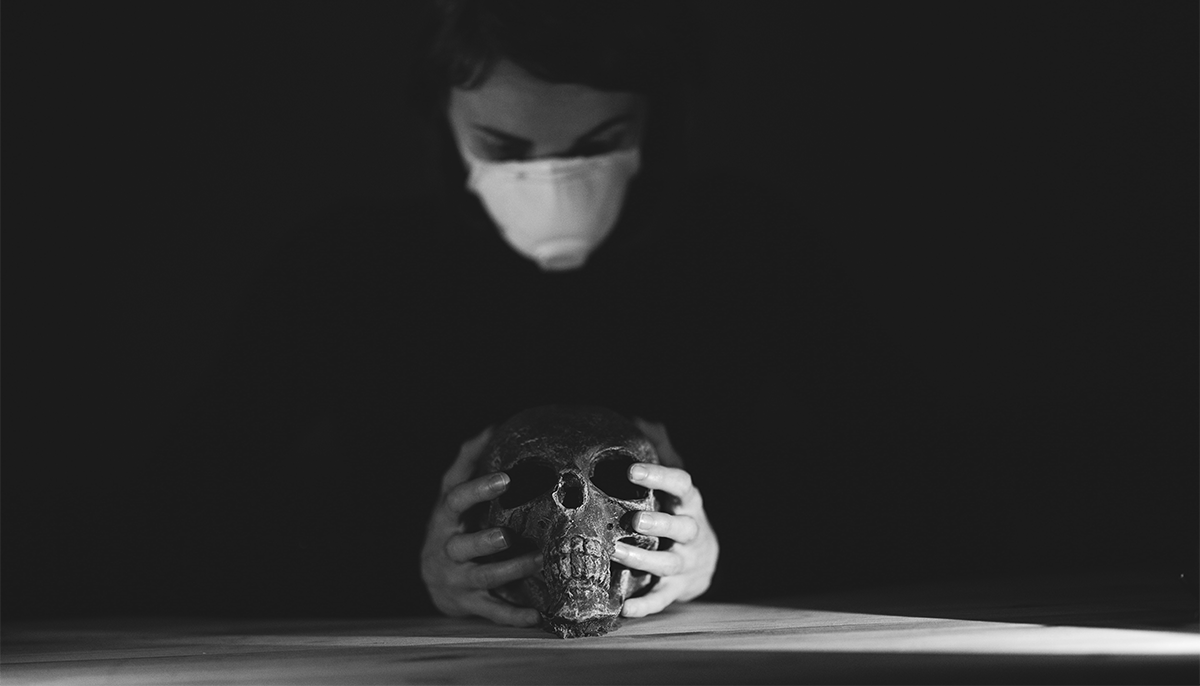
Buddhism’s Five Great Fears are fear of death, fear of illness, fear of losing your mind, fear of loss of livelihood, and fear of public speaking. I think that reason Buddhism calls these “great” fears is because each of them mobilizes the full force of our nervous systems’ threat response (which is why the panicky fear of public speaking is included in the list). Today I’d like to talk about the first of them — fear of death.
For most of us who are not ill or overly neurotic, fear of death seems distant and theoretical. It’s only when we step off a curb or do a bungee cord jump that our ancient primate neurology overwhelms all rational thought and we are flooded with panic.
In reality, death is an everpresent reality; it lives at the boundary of self and ego and defines our life. We are alive because we are not dead; though our daily life is filled with the mental jumble of thoughts, feelings, and plans, at another level we have a low-level vigilance system that is always looking out for existential threats.
Buddhism understands that from the standpoint of the ego the prospect of death is literally inconceivable. The ego cannot imagine being dead.
As we age this vigilance system changes. In addition to monitoring moment-to-moment threats such as an oncoming car or a loose banister, our threat scanning starts to intuit a distant but slowly approaching dark cloud — the approaching end, the ultimate boundary. Often it is the sudden death of someone close that brings this home; and then the frequency of hospital visits and funerals slowly starts to pick up speed, like a drumbeat in the jungle.
The Buddhist approach to all of this is quite practical, really. Buddhism understands that from the standpoint of the ego the prospect of death is literally inconceivable. The ego cannot imagine being dead. It has no reference point for it. But there is another aspect of awareness that not only can understand it but already knows about it. There is a saying in the Zen tradition, “Birth and death are the great matter.” That is where actual Buddhist practice takes root.
[Read: The Wisdom in Dark Emotions]
2. Illness
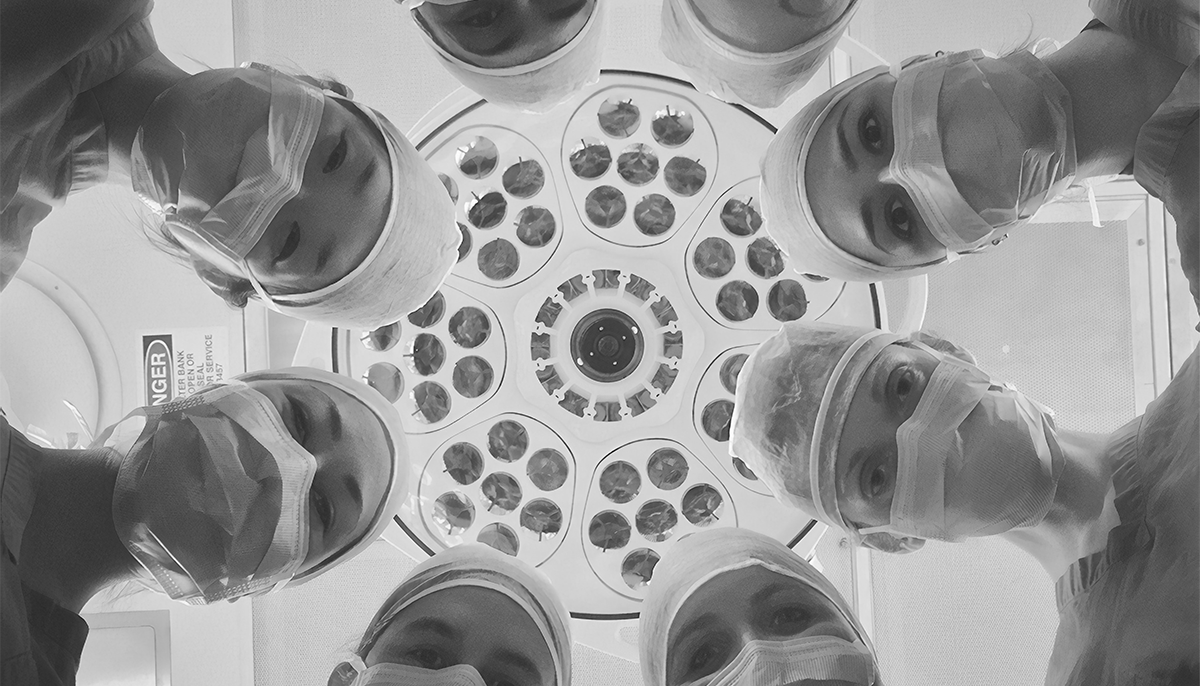
The second of the five great fears in Buddhism is the fear of illness. In the time of the Buddha, and for most of human history until quite recently, this was a formidable fear indeed. Disease was everywhere. Infants and small children, as well as adults, were regularly taken away by cholera, diphtheria, influenza, smallpox, and other infectious diseases that today are curable or controllable. How quickly we forget that penicillin — and all subsequent antibiotics — was only discovered a little over a hundred years ago. In America and other industrialized countries where people have access to modern medical care, we live in a bubble of seeming safety.
Illness was a harsh teacher, but now that I look back, I know that illness also brought me gifts, not the least of which is some freedom from fear about it.
I say seeming because the fear of illness is deep, and never far from the surface. In dharmic terms, fear of illness, like fear of death, is rooted in our ego identification with the body, and the constant low-level vigilance about threats to it which is hardwired into our nervous system. Some traditional Buddhist monastic training — so punishing to the physical body, with its poor diet, exposure to heat and cold, and little sleep — is designed in part to cut through this identification with the body, so that we can see a deeper reality than ego. Such training is possible for the young and hardy, but these days people of all ages and physical conditions — including those with chronic illnesses — want to practice the dharma. We need to find other ways.
I have been ill a lot in my life. I count ten years out of my life when I was either fighting a life-threatening illness or weak and in recovery from one. Illness has been central to my practice life. I have had to deal with it; I had no choice. During any of my illnesses — cancer, neck injury, encephalitis — I would think, “I’d give anything not to be this way.” But I was that way, and there was no choice. Illness was a harsh teacher, but now that I look back, I know that illness also brought me gifts, not the least of which is some freedom from fear about it. When you have gone through the worst, nothing is worse by comparison. The ego is a little liberated from its anxieties.
In a passage in Kurt Vonnegut’s Slaughterhouse-Five, prisoners of war are marching in the dead of winter. Everyone is frost-bitten, shivering, and miserable. Occasionally someone keels over, dead, but the German guards of course force the rest to keep going. One prisoner kept trying to cheer everyone up with this litany: “Cold, this ain’t cold. Troy, New York, winter of ’36 — now that’s cold!”
He keeps saying this in a cheery voice, trying to distract the other men from their suffering — right until the moment he himself keels over, dead. His litany, I’ve often thought, was a kind of mantra against fear. He knew about Troy, New York, winter of ’36. He had had some training.
[Watch: Practices for When You Are Sick, led by Roshi Joan Halifax]
3. Dementia
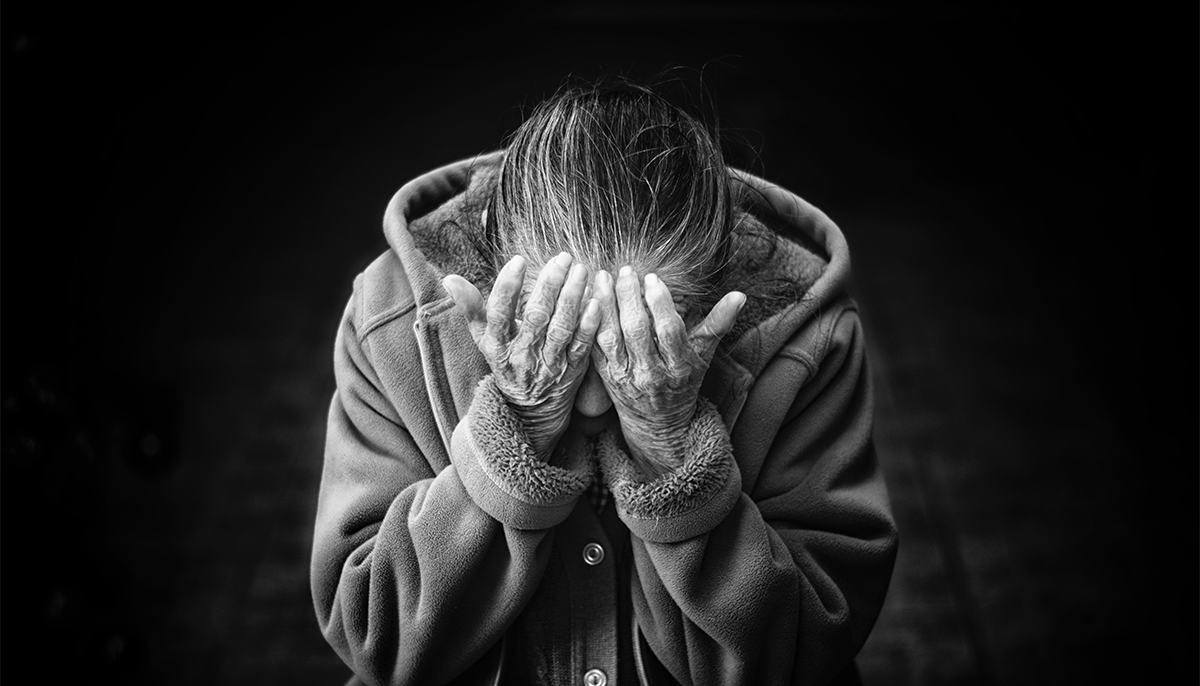
What a downer of a topic! Who wants to think or talk about dementia, Alzheimer’s, losing one’s mind? Yet it is the “third great fear” in Buddhist teaching, so clearly the ancient Buddhists wanted to talk about it. They knew that the best way to transform and dissolve fear is to face it. Well, today I’m going to try something that may not be possible — find a positive, uplifting, and encouraging way to talk about this.
Well, let’s start by being honest: pretty much everyone over a certain age either knows someone who has dementia (maybe a parent) or worries about getting it themselves, or both. It’s the new great taboo topic, replacing sex and money. Try bringing it up at a party and see how far you get. Let’s also point out one obvious bright side: until recently most human beings didn’t live long enough to acquire dementia, so this illness is a byproduct of modern medicine’s gift to us of longevity. I somehow doubt that anyone reading this is uplifted by that fact, however.
I said in an earlier post that ego can’t conceive of death. But it can conceive of losing control, of losing its capacities, of witnessing its own slow dissolution. For many people that prospect is more terrifying than death, precisely because not only can we conceive it, we can watch the devastating toll it takes on other people and their families.
The sense faculties and mental processes are damaged, but the underlying Buddha-nature is unchanged.
So this fear is the big kahuna, so to speak. But until the day comes that you get that diagnosis, what is this fear, really? It is nothing more than a thought form, something that might be – that could be, that would be – terrible if it were real, but isn’t real now. What a teaching! The lesson of all Buddhist teaching, really, is that most of what we think is real is just a construction out of the bits and pieces of memory, sense perception, imagination, and emotion — the flotsam and jetsam of body and mind, what Buddhism technically calls the five skandhas or “heaps.” See through this construction project and freedom dawns.
Yes, terrible things could happen to us, at any time. Terrible things are happening right now, everywhere. If you would like to scare yourself, make a mental list of such terrors, go over it several times until your heart pounds, and prepare yourself for a sleepless night. If you would like put some space around these fears, here is a teaching that Thrangu Rinpoche gave once when asked directly what happens to practice and wisdom when a person has Alzheimer’s.
“The sense faculties and mental processes are damaged,” he said, “but the underlying buddha-nature is unchanged.”
These words provide a strong hint as to what this buddha-nature might be, and what its qualities are. One of them, according to the teachings, is luminosity.
I don’t know if I have succeeded in making the topic uplifting, but I’ve managed to write about the unspeakable and I’m still here. I hope you are too!
[Read: Ask the Teachers: How can we practice when dealing with dementia?]
4.Loss of Livelihood
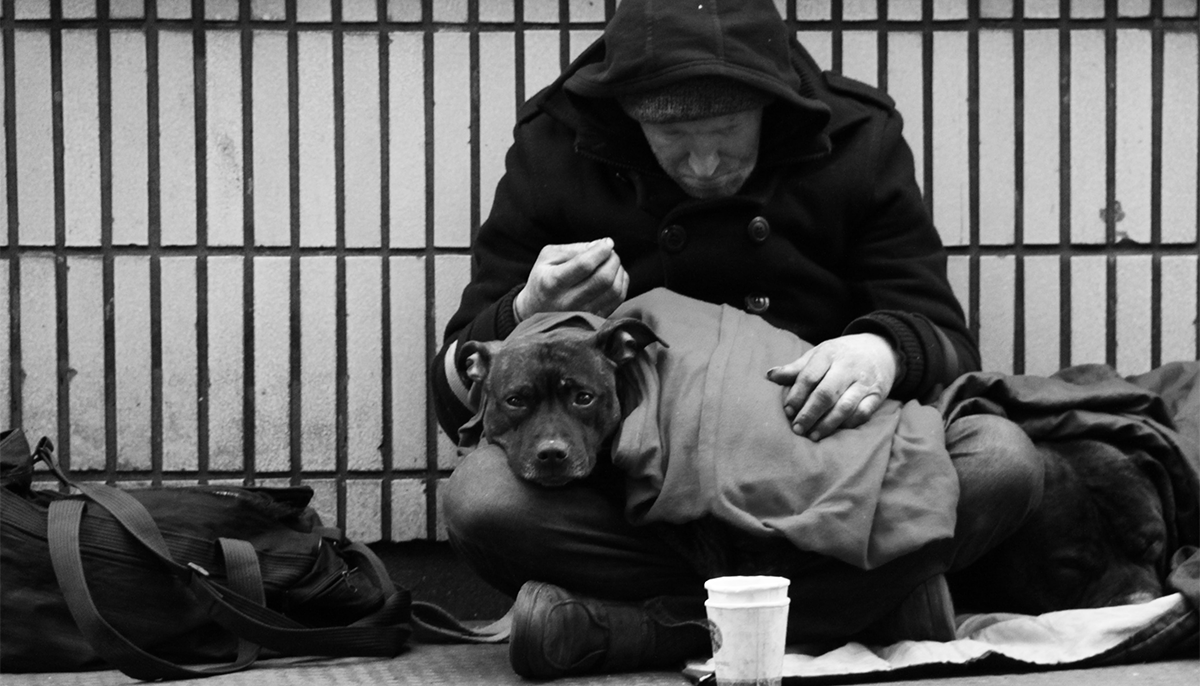
The fourth “great fear” of Buddhist teaching is “fear of loss of livelihood.” It is interesting that this doctrine was formulated by monastics living a life of mendicancy and voluntary poverty. One would think that the vow of poverty would liberate monks from the ordinary anxieties of earning a livelihood, but of course, the monks and nuns were utterly dependent on what was put into their begging bowl by local villagers. If nothing was put in, there would be no meal that day. The fear of not being fed or having our material needs taken care of is deeply human, and not just human. Every creature lives with this fear. It is basic.
What Buddhism teaches us is that clinging to anything as a “baseline” creates a baseline of anxiety as well.
All of us have just gone through a time of such anxiety. Millions of people have lost their jobs. Many peoples’ life savings were depleted and have still not fully recovered. Buddhism is right; this fear is a “great” fear. It keeps us from sleeping at night. It causes panic attacks and depression. It predisposes us to drink or drugs and stresses relationships and marriages. Even for otherwise healthy people, this is a big one. What does Buddhist practice have to offer us, especially if we are older and are not able to envision making a new start and recovering what we have lost?
First of all, it is only among the middle-class and above in America that we can routinely assume much real financial or material security. Most people in the world today never have such security, and in some parts of the world people are like the Buddhist monks of old — they never know from one day to the next whether they will have enough food for themselves or their children. So here most people (but by no means all) start from a baseline of basic needs being reasonably met.
What Buddhism teaches us is that clinging to anything as a “baseline” (whether it is our physical body, food, money, or a home) creates a baseline of anxiety as well. Suffering is caused by clinging — that is core teaching. Fine, we say, now that I just lost my home I know that. What else have you got for me?
What Buddhism has for us is the upside of continuous change — the possibility that things might change for the better. Even when we are old, even when we are ill, even when our life is a sea of compounding losses, there is always this next moment, this next breath. This is the principle of “every breath, new chances.”
This is something that one of my early Zen teachers liked to say. As I said before, this is the “upside” of the fact that everything changes. One of the hallmarks of negative mind-states such as sadness, grief, or depression is the sinking conviction that this is it, nothing will ever change for the better. This is the “death-spiral” or feedback loop that sends people deeper and deeper into despondency. During one of my illnesses, I experienced this and I can testify to the incredible certainty with which my mind viewed my condition as unalterable and permanent. At one point, my wife was reduced to repeating to me over and over, “This is temporary!”
I remember thinking, “Oh, fine. She’s just saying that to cheer me up. No good. I know better.”
Of course, she was right. And when I did get better and looked back, my state of mind during that dark period now seemed deranged. But the Buddhist view of our ordinary confused and emotional mind-states is that they are all in some sense deranged. The belief that anything will last, or stay the same, or never change, is rather deranged, and not at all in accord with reality. But we persist on thinking that way because we cling to whatever we have, even if it is a tiny cleft in the rock of our suffering.
Fear of loss of livelihood: there is no getting around the fact that for many people, the loss of a job or home or life savings is indeed irrevocable, and perhaps for the rest of their life there is no getting those things back. In that sense it is like having your leg amputated — you never go back. But of course, amputees learn to adjust, change, and go on, and most often revive to lead full and engaged lives. When Buddhism teaches that things can and often do change for the better, it is not necessarily the “better” that we prefer or imagine. In fact, it is not “better” — in the sense of comparing it to some former state — at all. It is just something else, something new, the next thing.
Every breath, new chances. But do we notice? That’s the trick.
[Read: What To Do When the Going Gets Rough]
5. Public Speaking

The fifth “great fear” of Buddhism is, strangely enough, the “fear of public speaking.” The other four — fear of death, fear of illness, fear of dementia, and fear of loss of livelihood — are so obviously great fears that it is curious that fear of public speaking is included with them. Certainly, those who have this fear can report that it is paralyzing — similar to a panic attack. One person I know who had this fear said, quite calmly, that they would prefer to slit their throat rather than speak before an audience.
Panic is the true face of ego, with all the civilized overlay stripped away.
There is little teaching or analysis in the Buddhist texts about this fear, so I can only guess about it. Certainly, monks did have occasion to speak before crowds — it was part of how they supported themselves — so clearly this particular kind of stage fright was well known in the ancient world. I actually think that this fifth fear is a clue to the other four. All five mobilize the “red alert” threat machinery of our nervous system — the racing heart, the shortness of breath, the overwhelming sense of being out of control. And what is this “red alert” machinery? It is the last-ditch survival strategy of the organism, the ultimate ego defense. It is the face of panic.
Trungpa Rinpoche was known to admire panic as an extremely creative way to break through the bonds of ego. I wish I had the exact quote, but it was something like that. Panic is the true face of ego, with all the civilized overlay stripped away. This is not to say that awakened people cannot experience panic. Suzuki Roshi, my teacher, wrote eloquently of his panic experience of near-drowning. He appreciated the experience and felt that it helped deepen his practice.
I don’t recommend panic as a new kind of spiritual experience, but these five great fears are, I think, about panic, and what can be learned from panic. The most important lesson is that panic is something we can get through. Rarely do people actually die of panic, although the thought of dying, literally or figuratively, is what causes the panic. Once, due to a neurological illness, I was in a panic some part of every day for nearly a year. It was about as bad as anything can get. But strangely, now that I am recovered, I don’t seem to be as fearful about things as I once was. I can’t claim that this is due to any great emerging wisdom, as much as long familiarity with panic. As one of my doctors said to me, “You’ve been to the mountaintop of anxiety. It kind of got burned out.”
Incidentally, for those who actually suffer from fear of public speaking, beta-blockers are a good medicinal remedy. And I have been told that it is one of the easier phobias to cure through desensitization. No need to slit your throat — about that or anything else, really. Life itself is hard enough without imagining that level of drama.
